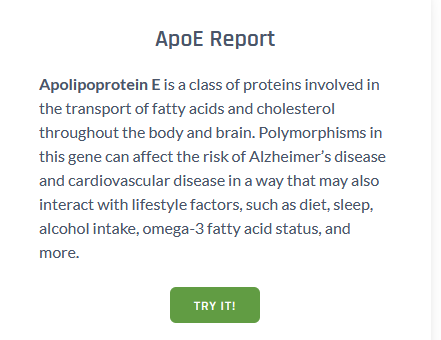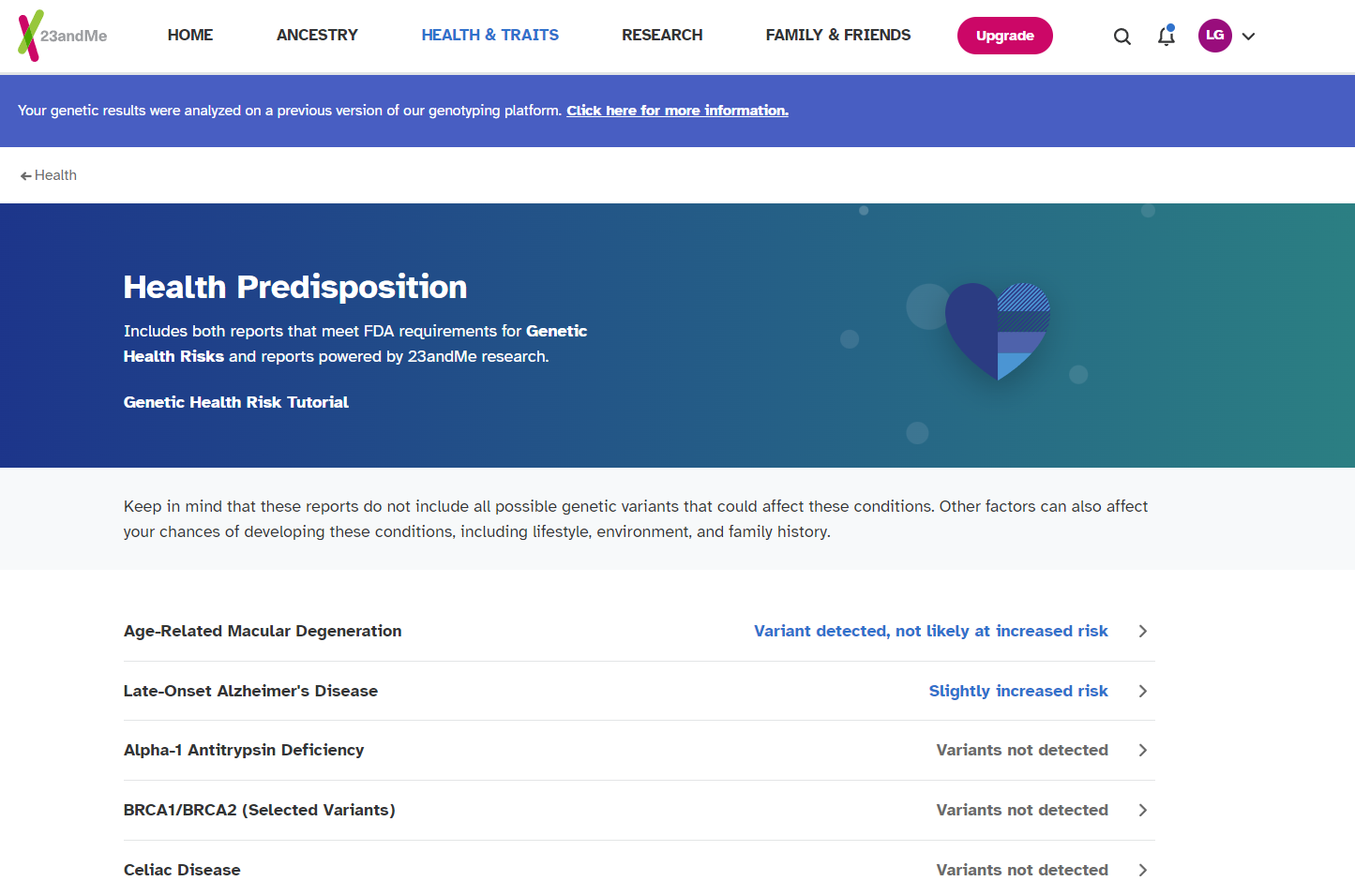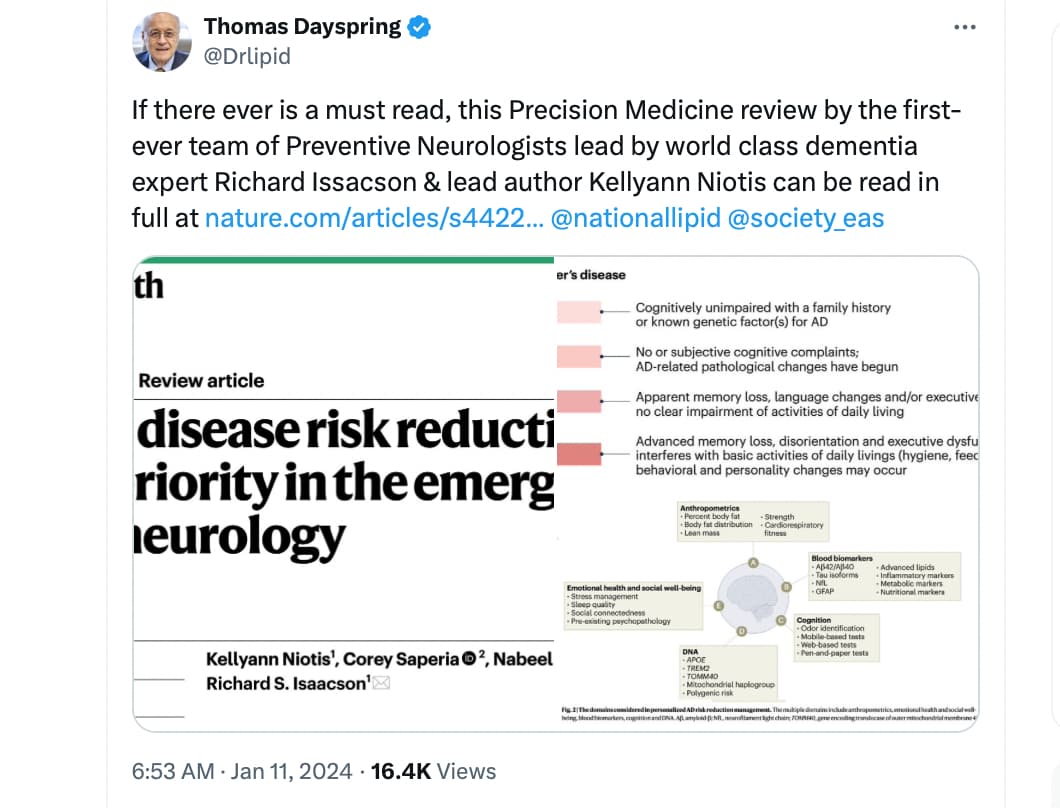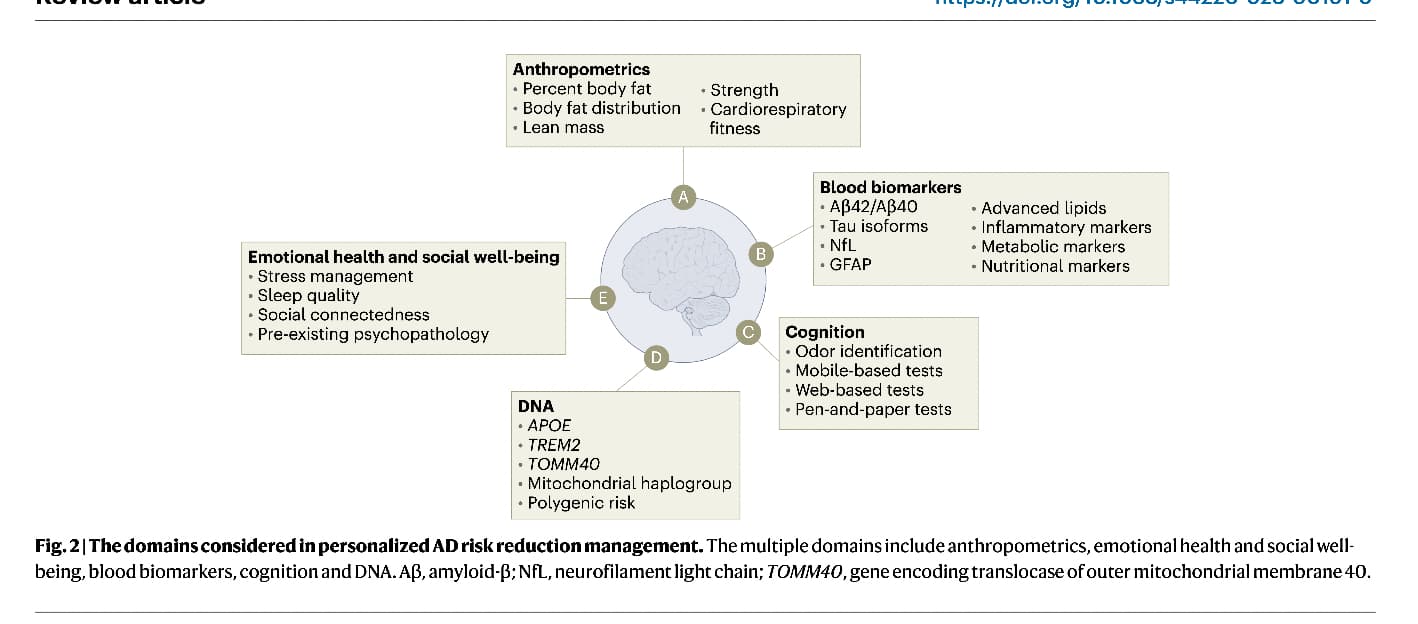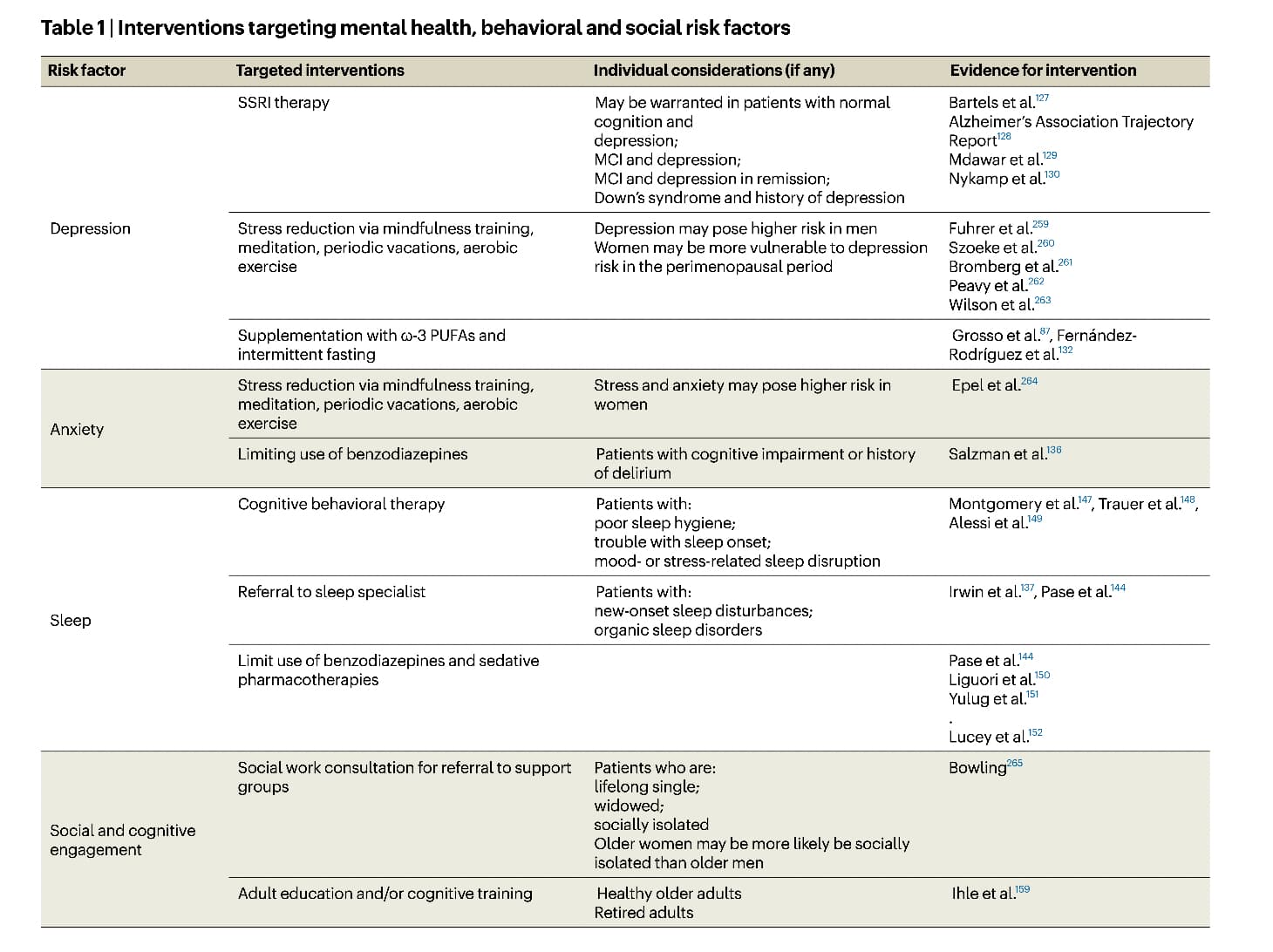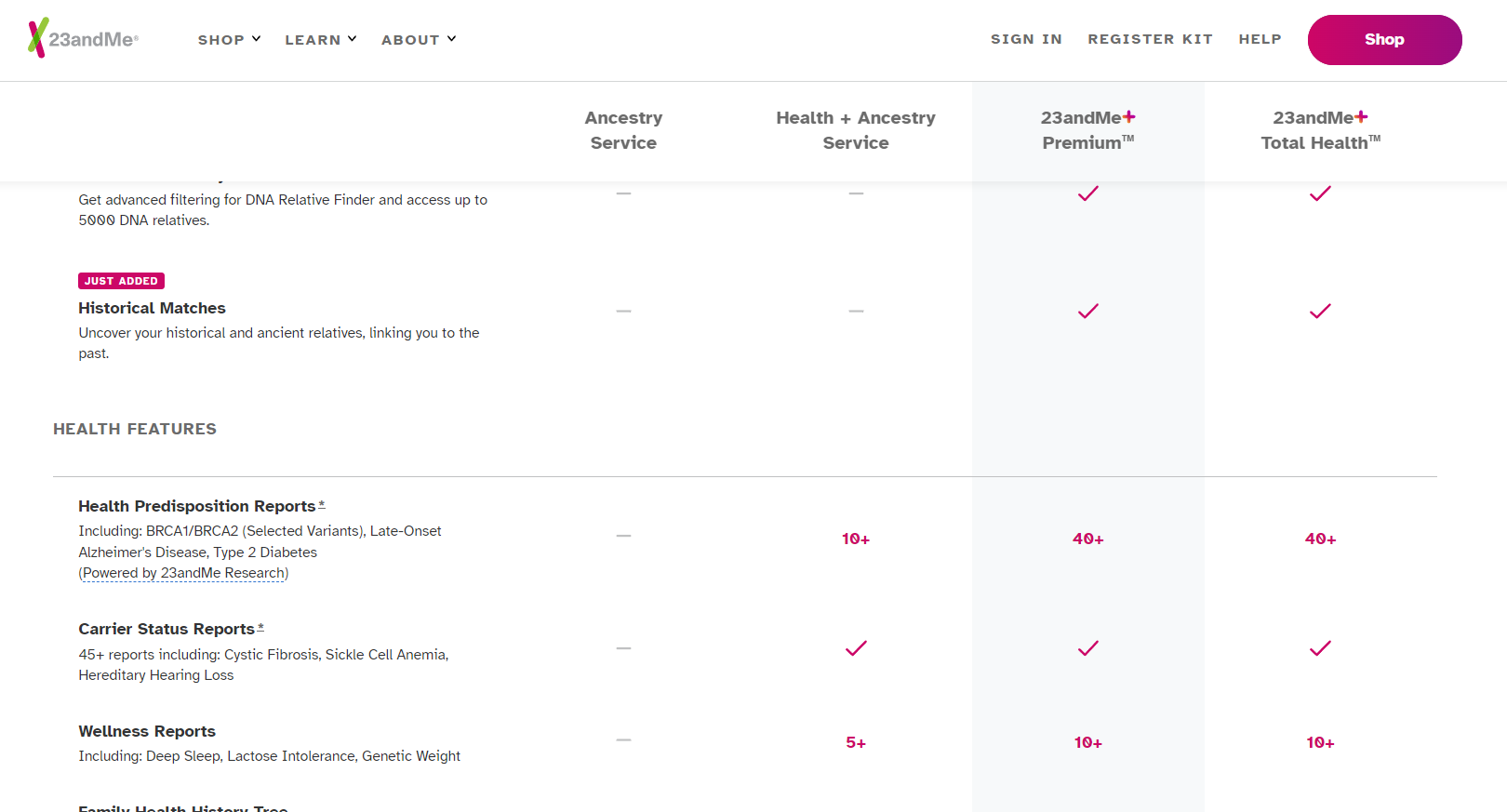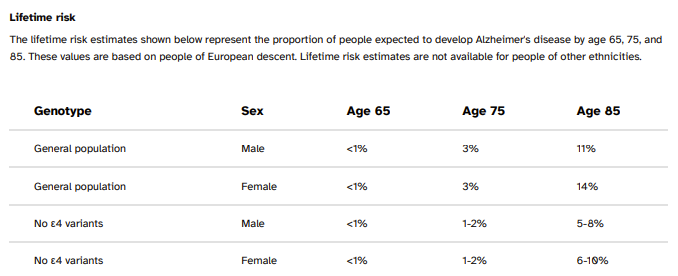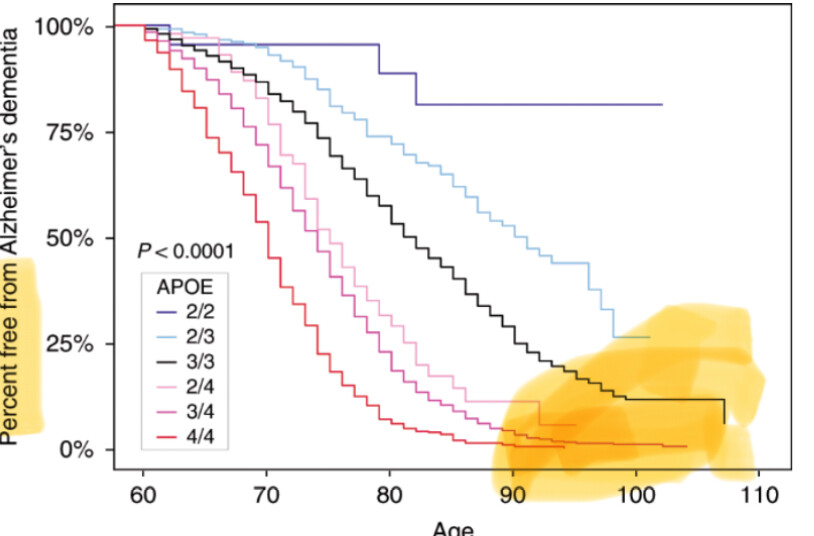Overlapping authors with this also exciting study:
Feasibility of Using Blood-based Biomarkers to Evaluate the Effectiveness of Individualized Neurodegenerative Disease Preventive Care
Establish biorepository of blood-based biomarkers for neurodegenerative diseases (ND); assess feasibility of biomarker collection/processing in subjects at risk for dementia; incorporate concurrent phenotypic clinical data; and explore utility of blood-based biomarkers as outcome measures for n-of-1 trials.
Background:
ND have an extended preclinical period. Early identification and intervention prior to dementia may offer the best opportunity to prevent or delay cognitive decline. Research suggests that blood-based biomarkers may be a reliable predictor of disease progression. The opportunity to use blood-based biomarkers to identify risk, monitor progression, and potentially guide individualized care represents a significant opportunity.
Design/Methods:
Subjects with family history of ND with no or minimal cognitive and/or neurological complaints were recruited. Demographics, medical history, cognitive assessments and blood-based biomarkers for ND (via venipuncture and/or at-home finger prick card testing) were collected at baseline and longitudinally. Blood-based biomarkers included: Amyloid beta 42/40 ratio, pTau181, pTau231, pTau217, Neurofilament light and glial fibrillary acidic protein. Subjects may also opt-in to share relevant data from preventive clinical care.
Results:
53 subjects (66% male, mean age 57.2, range 22–93, 62% ApoE4+) were enrolled. 75% of eligible subjects returned for follow-up assessments. A majority of subjects provided clinical data with biomarkers measured before and after risk reduction interventions prescribed by their physicians. Individualized clinical management consisted of various pharmacological therapies to address modifiable risk factors (e.g., tirzepatide, rosuvastatin, escitalopram), anti-amyloid therapies (e.g., aducanumab, lecanemab), other agents (e.g., rapamycin) and multi-modal lifestyle interventions (e.g., exercise, diet).
Conclusions:
In subjects at risk for dementia, it was feasible to collect/process blood-biomarkers. Several subjects had measurable changes in biomarkers of ND pathology and/or improvements or stabilization of cognition. Further research using blood-based biomarkers to evaluate the effectiveness of individualized ND preventive care in real-world clinical settings is needed.
https://www.neurology.org/doi/abs/10.1212/WNL.0000000000204525
